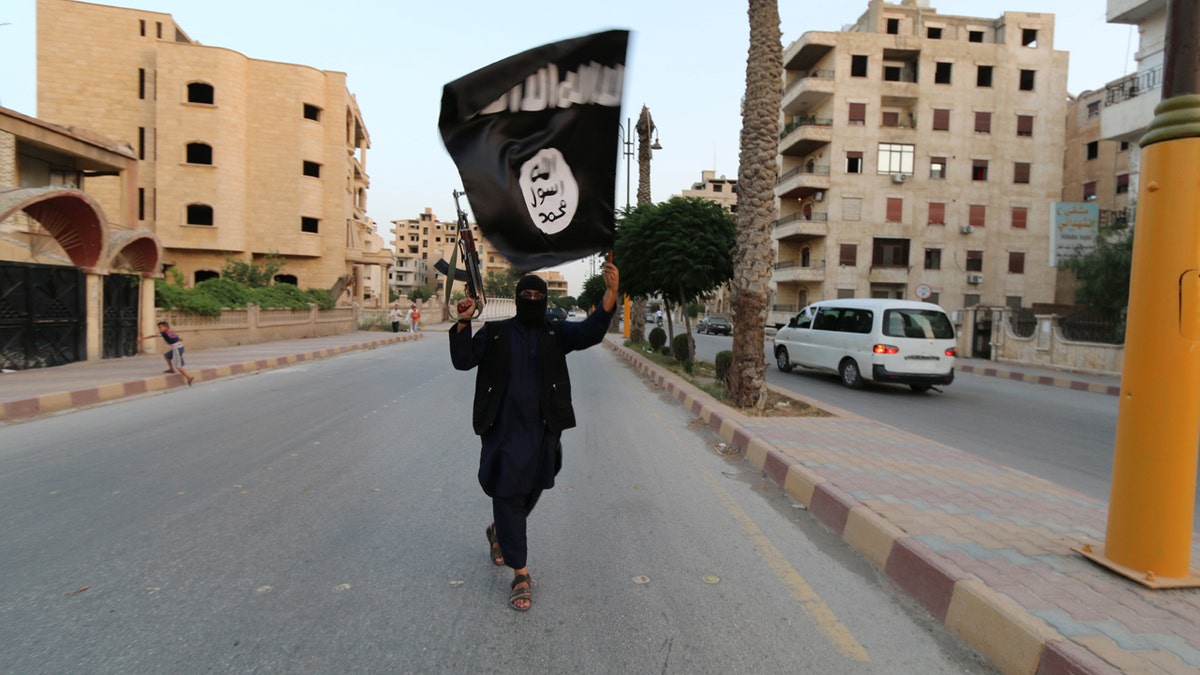
President Trump's National Security Strategy is restoring references to 'jihadist' terrorists. (Reuters)
Global terror attacks fell 33 percent last year, while non-militant fatalities dropped by more than one-fourth, marking their lowest point since 2011, according to a new report.
The study conducted by Jane’s Terrorism and Insurgency Center (JTIC) Global Index, was released Wednesday by business information provider IHS Markit. It said over the course of 2018 "JTIC recorded a worldwide total of 15,321 attacks by non-state armed groups, which resulted in a total of 13,483 non-militant fatalities.”
“The attack figure represents a significant 33.2 percent decrease from the recorded number of attacks in 2017,” stated Matthew Henman, head of JTIC.
The figures indicate the lowest annual attack total since 2011 and the lowest annual since JTIC started collecting comprehensive data in 2009. Major decreases in violence in Syria and Iraq in 2018, in the aftermath of ISIS being largely defeated in the region, is attributed to the 33 percent drop.
The report also found ISIS attacks fell by almost three-fourths, and resultant fatalities by more than 50 percent - although the group is still deemed “the deadliest worldwide in terms of the number of non-militant fatalities caused.”
The report also said Syria dropped to the second-highest rates of attack in a country, with the number falling by almost two-thirds. Resultant fatalities fell by almost half.
JTIC recorded violent activity by non-state armed groups in 90 countries worldwide in 2018, down from 116 in 2017.
VENEZUELA, IRAN AND HEZBOLLAH - ALL HOSTILE TO THE US - FORGE CLOSER TIES
WHY I LEFT ISIS: FORMER BAGHDADI 'FRIEND' AND AIDE, OTHERS SPEAK OUT
But according to Robin Simcox, a national security and terrorism expert at The Heritage Foundation, the slowing of the pace of attacks is “likely to be temporary.”
“ISIS is beginning to re-emerge as an insurgency force in Iraq and Syria and is still able to inspire plots in the West,” he said, pointing out law enforcement and intelligence agencies have also “done heroic work in thwarting plots being aided by increased budgets and an acknowledgment of the importance of intelligence sharing.”
“However, in many countries, the scale of the overall threat is still huge in comparison to their resources, and agencies subsequently have to ruthlessly prioritize which terror suspects to track,” Simcox continued. “They cannot get it right every time and cannot be expected to.”
But in contrast to the overall downward trend, JTIC noted attacks in Ukraine increased by almost one-fifth as it rose to be the most violent country in terms of recorded attacks. Moreover, Afghanistan became the deadliest country worldwide in terms of recorded non-militant fatalities, with attacks rising by almost one-third, and a significant 80% increase in fatalities.
Although attacks increased by 31.5 percent, resultant non-militant casualties in Afghanistan rose by 81.8 percent to 4,180 in 2018, making the country the deadliest country in the world in terms of recorded fatalities from non-state armed group attacks.
“In addition to periodic mass-casualty attacks by local Islamic State forces, the increases in both attacks and fatalities were representative of the growing strength of the Taliban, which intensified its territorial threat to the Kabul government in both rural areas and increasingly in urban centers,” said Henman.
Kamran Bokhari, a specialist on the geopolitics of the Middle East with the University of Ottawa's Professional Development Institute, pointed out that Afghanistan saw an increase in attacks last year, which was “also not surprising given that the Taliban insurgency has grown stronger and the state weaker since the U.S. drawdown that took place during the Obama administration’s second term.”
“Afghan security forces have not been able to contain the jihadist insurgency in their country,” he said.